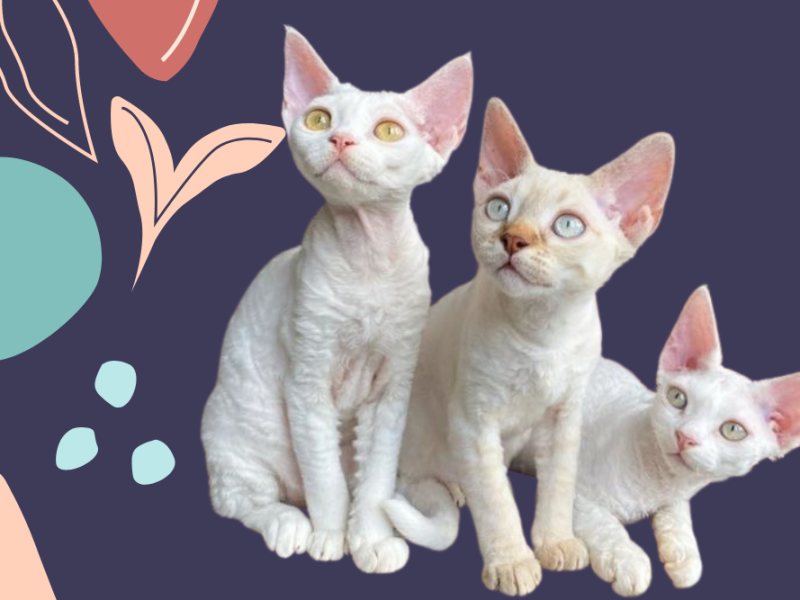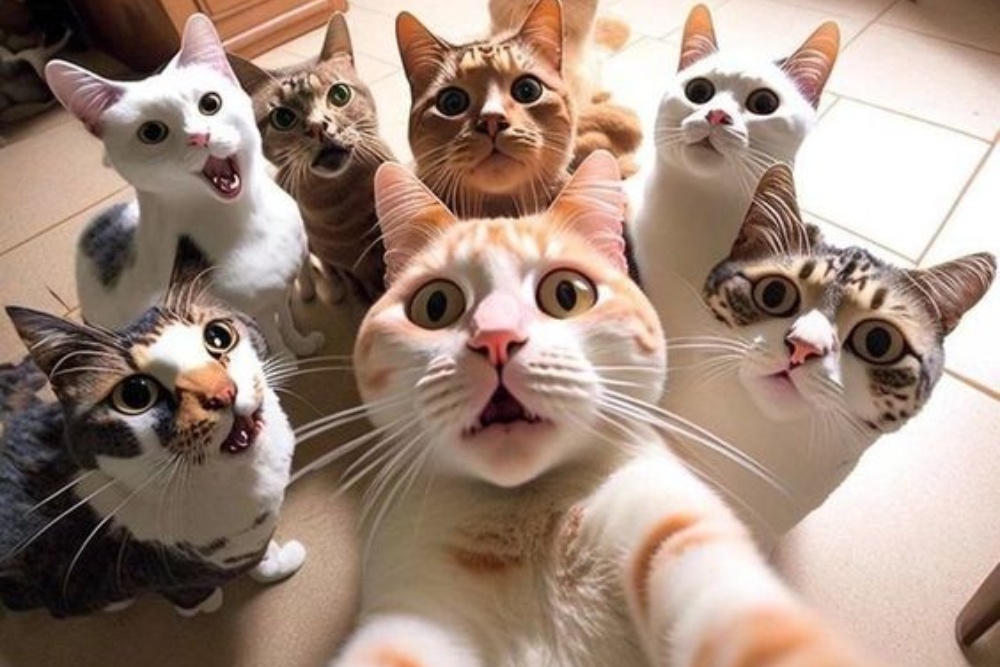In the intriguing world of Ragdolls, a question often sparks controversy: Can Ragdolls be black? The answer is a resounding yes, but surprisingly, black and other solid-colored Ragdolls face a unique struggle for recognition, particularly in the realm of official pet competitions. Despite their existence since the Ragdoll breed’s inception in the 1960s, these ebony-hued felines continue to navigate a journey towards legitimacy, still being sold by breeders today.
While black Ragdolls may not boast the traditional Ragdoll points – the mask, ears, eyes, legs, and tails – they encompass all the quintessential Ragdoll characteristics. From their substantial size to the luxurious silkiness of their coat and their famously docile personality, black Ragdolls embody the essence of the breed. Yet, as we delve into what sets the Ragdoll cat apart, the question lingers: Is there a unique charm or distinction found in these black cuties? Let’s unravel the tale to find out.
How to Know if Your Black Cat is a Ragdoll
If you are the proud owner of a black cat and suspect that it might be a Ragdoll, you’re in for a treat. Ragdoll cats, known for their striking appearance and gentle temperament, can come in various colors, including black. Cat lovers would love to know about Scottish Fold Munchkin Cats.
Color and Coat: The Black Elegance of Ragdolls
Ragdoll cats, including those with a black coat, exhibit a distinct color pattern. A true black Ragdoll will have a solid black hue across its entire body, including the fur, nose, and paw pads. The semi-longhair coat is silky and plush, requiring regular grooming to maintain its luxurious appearance and prevent matting.
Striking Blue Eyes: A Hallmark of the Breed
One of the most recognizable features of Ragdoll cats is their striking blue eyes. This characteristic holds true for black Ragdolls as well. If your black cat boasts deep blue eyes, it aligns with the breed standard and adds to the overall allure of the Ragdoll.
Temperament: Gentle and Affectionate
Ragdolls, regardless of their color, are known for their gentle and affectionate nature. If your black cat enjoys being held, carried, or even goes limp when you pick it up, these behaviors align with the Ragdoll temperament. Their calm demeanor and love for human interaction are distinct traits of the breed.
Size Matters: The Large and Lovable Ragdoll
Ragdolls are a large breed, and this size is consistent across all color variations, including black. If your black cat is on the larger side and takes a few years to reach full maturity, it’s another indication that it might be a Ragdoll.
Care and Grooming: Maintaining the Luscious Coat
Regular grooming is a necessity for Ragdoll cats, and this includes their black counterparts. The semi-longhair coat requires brushing several times a week to prevent matting and reduce shedding. Pay attention to dental care, nail trimming, and schedule routine veterinary check-ups to ensure overall health.
Origins of the Breed: The Ragdoll Legacy
Understanding the origins of the Ragdoll breed can provide additional context. Developed in the 1960s by breeder Ann Baker in California, USA, Ragdolls earned their name due to their tendency to go limp like a ragdoll when picked up. Knowing the breed’s history can contribute to identifying key characteristics in your black cat.
Additional Breed Information: Height, Weight, and Lifespan
It’s essential to consider specific physical traits when identifying a Ragdoll. Ragdolls typically stand at a height of 23–28 cm and weigh between 15–20 pounds, making them a larger breed. With a lifespan of 12–15 years, Ragdolls offer years of companionship. These cats come in various colors, including black, smoke, silver, brown, and gray.
Ideal Living Conditions: Suitable for Families and Indoor Living
Ragdolls are well-suited for families and indoor living. Their calm and gentle temperament makes them adaptable to various household dynamics. Additionally, Ragdolls can coexist peacefully with other pets, enriching the overall living experience for everyone involved.
Navigating Nuances: Exploring the Differences Between a Black Ragdoll Cat and a Standard One
In the realm of Ragdoll cats, the most evident difference lies in their coloration. A Black Ragdoll boasts a solid ebony coat, a departure from the standard color points found in traditional Ragdolls. Understanding the unique genetics behind the black hue unveils a distinct charm that sets them apart.
Traditional Color Points: The Ragdoll Spectrum
Standard Ragdoll cats exhibit a range of color points, including seal point, blue point, chocolate point, lilac point, red point, and cream point. These color variations, emphasizing specific areas like the face, ears, paws, and tail, create a visually striking and recognized pattern that defines the traditional Ragdoll aesthetic.
Cross-Breeding Complexity: The Journey to Black
The solid black coat of Black Ragdolls often hints at a different lineage. Cross-breeding may be involved in achieving this unique coloring, contributing to the rarity of black variants. While this departure from tradition may pose challenges in official competitions, it adds an intriguing layer to the Ragdoll’s genetic tapestry.
Rarity and Individuality: The Black Cat Mystique
The unconventional coloring of black Ragdolls introduces an element of rarity and individuality within the breed. Despite potential challenges in show circuits where adherence to color standards is crucial, the black variant brings a unique charm and mystique that appeals to those seeking a feline companion with a touch of the extraordinary.
Common Traits: Size, Coat, and Temperament
Both black and standard Ragdolls share common Ragdoll traits, including a large size, silky semi-longhair coat, and a docile temperament. These shared characteristics form the foundation of the Ragdoll breed’s appeal, regardless of color variation.
Recognition Challenges: Navigating the Show Circuit
In competitive feline shows, adherence to established color standards is paramount. Black Ragdolls may face challenges in gaining recognition due to their departure from traditional color points. However, this does not diminish their inherent charm and unique contribution to the diverse world of Ragdoll cats.
Untangling Costs: Considerations for Acquiring a Black Ragdoll Cat
When delving into the world of Black Ragdoll cats, it’s crucial to unravel the intricacies of cost considerations. Unlike their standard-colored counterparts, the pricing dynamics for black Ragdolls present a distinctive landscape shaped by various factors.
Breeders and Reputation: The Pioneers of Pricing
The reputation of the breeder plays a pivotal role in determining the cost of a black Ragdoll cat. Established and reputable breeders, known for their commitment to ethical breeding practices and the well-being of their feline charges, may command higher prices. Their experience and adherence to breed standards contribute to the overall value of the cats they produce.
Lineage and Pedigree: The Ancestral Price Tag
The lineage and pedigree of a black Ragdoll cat significantly impact its cost. Cats with illustrious ancestry, boasting lineage with champion or show-quality cats, often come with a higher price tag. The prestige associated with a distinguished lineage contributes to the perceived value of the feline companion.
Regional Influences: Geographic Variation in Pricing
Cost considerations for black Ragdoll cats also vary geographically. Regional factors, including the cost of living and demand for specific cat breeds, contribute to fluctuations in pricing. In areas where black Ragdolls are less prevalent, prices may be influenced by their rarity.
Unconventional Color: Black as a Budget-Friendly Option
One notable trend in cost considerations is that black Ragdolls tend to be more budget-friendly compared to their standard-colored counterparts. This is attributed to the unconventional nature of the black coat in the context of traditional Ragdoll color points. Buyers seeking a unique and more affordable option may find black Ragdolls to be an appealing choice.
Cross-Breeding Impact: A Reflection in Pricing
The potential involvement of cross-breeding to achieve the black coloration may influence pricing. While black Ragdolls maintain the essential Ragdoll characteristics, the cross-breeding factor may contribute to a more varied price range. Buyers should engage in transparent discussions with breeders to understand the breeding practices employed.
Market Demand: Supply and Demand Dynamics
Market demand for black Ragdoll cats also plays a role in determining their cost. If there is a higher demand for these unique-colored felines, breeders may adjust prices accordingly. Conversely, in regions where black Ragdolls are less sought after, prices may be more competitive.
Understanding these multifaceted cost considerations is essential for individuals considering the adoption or purchase of a black Ragdoll cat.
Rarity of Black Ragdoll Cats
Black Ragdoll cats, with their mesmerizing ebony coats, stand as intriguing anomalies within the Ragdoll breed. Their rarity adds a layer of fascination to the feline world, but understanding the nuances of their uniqueness requires a closer look.
In the vast spectrum of Ragdoll cats, black variants are undeniably rare. Traditional colors, such as seal point, blue point, chocolate point, lilac point, red point, and cream point, dominate the breed’s standards. Black, however, doesn’t find a place in the recognized color spectrum, contributing to the exceptional rarity of black Ragdoll cats.
Within the formal settings of feline competitions, adherence to established color standards is paramount. The absence of black from the acknowledged color palette presents a challenge for these felines to gain recognition. Their unconventional coloration, while elegant and unique, places them outside the traditional boundaries set for the Ragdoll breed in competitive arenas.
Proving the Ragdoll Heritage: The Role of DNA Testing
The path to definitively proving the Ragdoll heritage of black cats involves the precision of DNA testing. This scientific method stands as the gold standard for confirming lineage and validating the status of a cat as a purebred Ragdoll.
To embark on the journey of confirming a black cat’s Ragdoll lineage, engaging the expertise of a licensed breeder or veterinarian well-versed in feline genetics is crucial. Their deep understanding of the breed’s genetic markers ensures a meticulous analysis that can unravel the genetic tapestry and confirm the feline’s purebred status.
DNA testing involves a comprehensive analysis of genetic markers. This intricate process unveils the cat’s lineage by scrutinizing specific genetic traits associated with the Ragdoll breed. The results not only authenticate the purebred status but also provide a fascinating glimpse into the cat’s ancestry, contributing to a deeper appreciation of its heritage.
The challenges faced by black Ragdoll cats in gaining recognition as purebreds can be traced back to their deviation from established color guidelines within competitions and breeding associations.
Challenges in Recognition as a Purebred
The reason black Ragdoll cats are not recognized as purebred may stem from their departure from the traditional color standards set for the breed. Competitions and breeding associations often adhere to established color guidelines, excluding colors not within the recognized spectrum. This can lead to challenges in the recognition of black Ragdolls as purebred within these formal settings.
In conclusion, while black Ragdoll cats possess unique charm and characteristics, their recognition as purebred Ragdolls may face hurdles due to the unconventional coloration. DNA testing remains the most accurate method to confirm lineage, allowing owners and breeders to appreciate the distinctive qualities of black Ragdoll cats within the broader spectrum of feline diversity.


